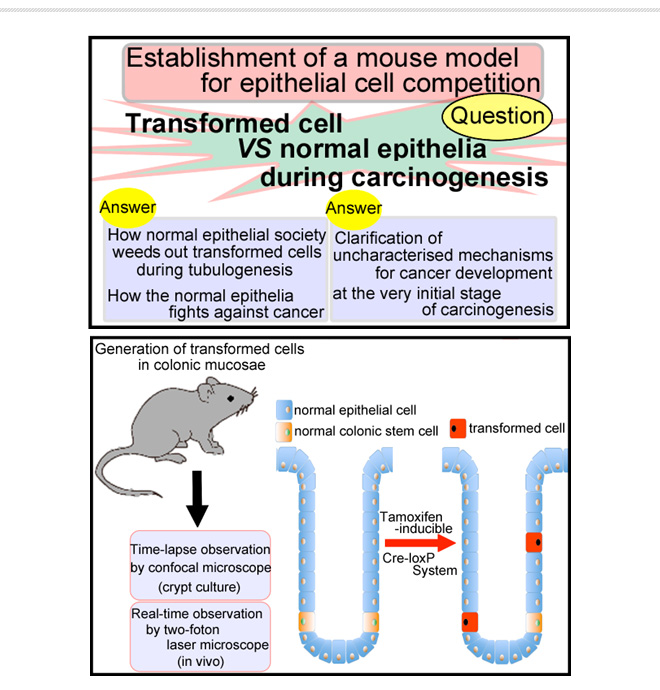|
HOME > Proposed research projects > 2012-2013: Proposed research projects 14
 2012-2013: Proposed research project 14Establishment of a mouse model of “cell competition” between transformed and normal epithelial cells in tubular epithelial tissue
Purpose of the Research ProjectMost of malignant tumors begin with one transformed cell that is derived from a normal cell in an epithelial tubular tissue. In cell culture system, it is revealed that a transformed cell, when cultured among normal epithelial cells, can be cleared out from the epithelial sheet either by cell death or by apical/basal extrusion. This phenomenon has been called "cell competition." Existence of the cell competition system in vitro implies that normal epithelia in our body can also physiologically eliminate transformed cells from the epithelia in order to fight against cancer development. However, it is still not known whether or not this "cell competition" also occurs in our mammalian body, since mouse models for the cell competition phenomenon have not been established so far. The purpose of this research is to establish a novel mouse model to study cell competition in vivo. Content of the Research ProjectMice with colonic mucosa-specific Cre/ER alleles will be generated and crossed with a KrasV12-eGFP conditional knockin mouse. In the KrasV12;Cre/ER mice, KrasV12-transformed cells can be induced by Tamoxifen injection. It is known that Cre activity in cells can be regulated by the amount of Tamoxifen in a dose-dependent manner according to the theory of probability; the fewer the injected Tamoxifen is, the fewer the Cre-active cells in tissue. Thus, by injecting substantially few amount of Tamoxifen into KrasV12;CreER mice, it is supposed to be possible to make a situation where one transformed cell emerges in otherwise normal colonic epithelia. Fates of the transformed cells (GFP(+)) will be traced in a real-time manner either in vivo or ex vivo. Expected Research Achievements and Scientific SignificanceThis mouse model of cell competition phenomenon will achieve four important aims in the future. (1) Establishment of the first mouse model to investigate cell competition phenomenon, (2) Clarification of molecular mechanisms for cell competition in vivo: "how the normal epithelia physiologically eliminates transformed cells to prevent cancer development," (3) Establishment of a mouse model by which we can experimentally mimic a situation of the very initial stage of carcinogenesis in vivo, (4) Application of this mouse model as a screening tool to be used in a screening for novel anti-cancer drugs targeting cell competition machinery of epithelia.
|








